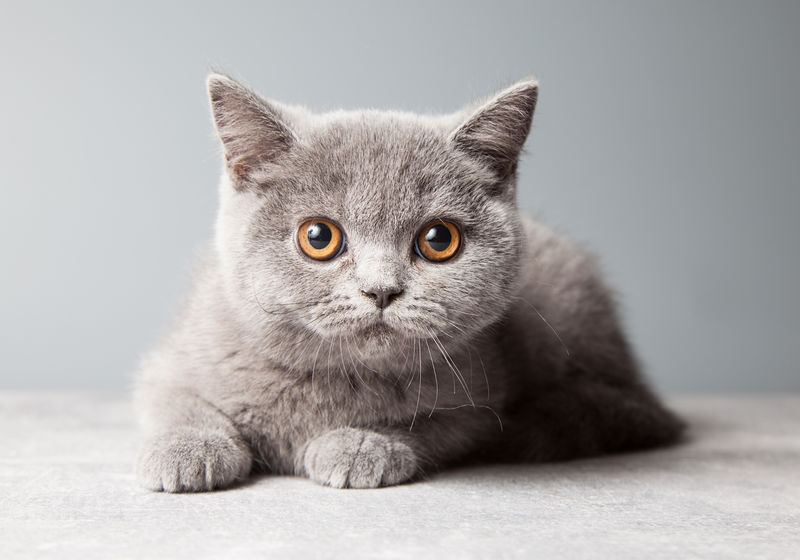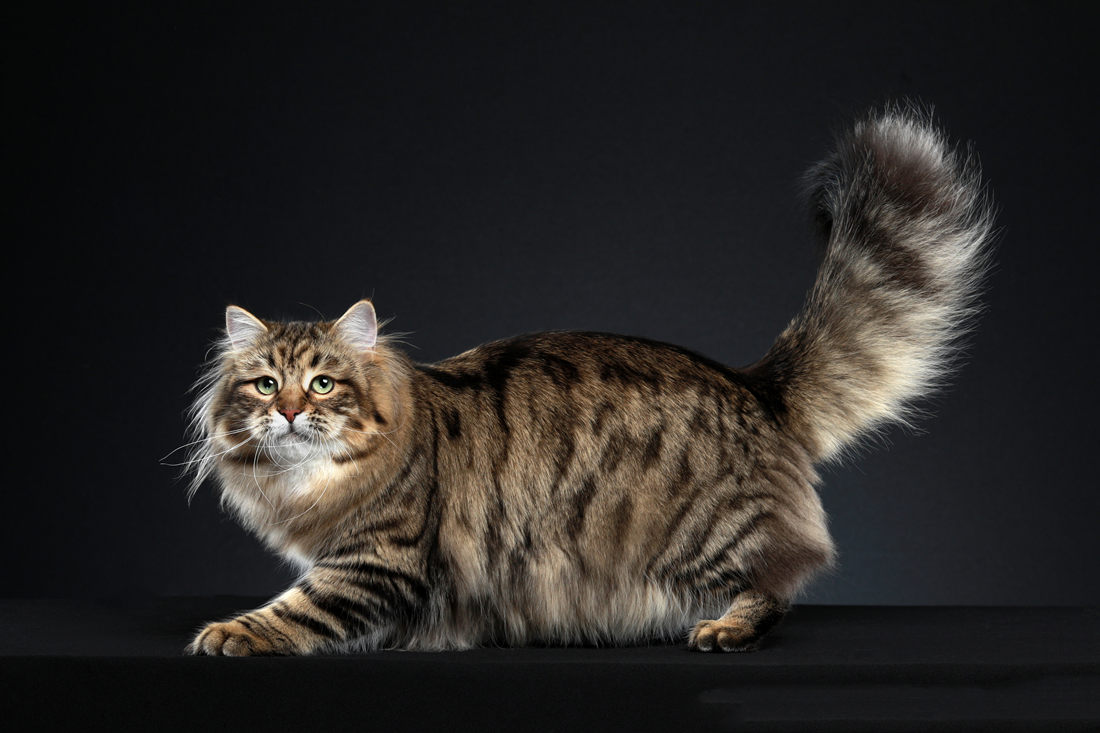Siberian cats are covered with a long coat and even have a thick collar of hair around their neck. Their outer guard hair is hard, smooth and greasy, and their undercoat is dense and thick, and they are huge, weighing upwards of 9 kilograms, making them one of the largest cat breeds. As a Siberian cat lover, do you know what factors affect the size of a Siberian cat and how to maintain a healthy Siberian cat size? Let me answer your questions by comparing their size to other cat breeds.
In This Article
5 Cat breeds compared with Siberian cats
Maine Coon
 The Maine cat is a large cat with thick fur, a small head, square face, large, straight, wide ears and large eyes. Originally a working cat, the Maine was strong and hard working, able to tolerate harsh weather and known for its smooth, thick fur. Compared with Siberian cats, Maine’s legs are short and close to the ground. Male Maine cats generally weigh more than 7KG, usually 7KG-15KG, while Siberian cats are usually around 4.5-9KG, so in terms of size, Maine > Siberian cats.
The Maine cat is a large cat with thick fur, a small head, square face, large, straight, wide ears and large eyes. Originally a working cat, the Maine was strong and hard working, able to tolerate harsh weather and known for its smooth, thick fur. Compared with Siberian cats, Maine’s legs are short and close to the ground. Male Maine cats generally weigh more than 7KG, usually 7KG-15KG, while Siberian cats are usually around 4.5-9KG, so in terms of size, Maine > Siberian cats.
Ragdoll Cat Size
Ragdoll cats have unusually fluffy and soft coats, and like soft Ragdoll cats. They have gentle and quiet temperaments and are very friendly to humans. Ideal Ragdoll cats are larger, adult males up to 10 kilograms, females up to 8 kilograms. They have a thick, long, wide chest and a muscular body. Compared with the Siberian cat, the head of the Ragdoll cat is equilateral triangular, flat between the ears. The cheeks follow the facial line and become wedge-shaped. In contrast, the Siberian cat has a short and wide head with a trapezoidal front with a smooth outline. The upper part of the forehead is flat with a smooth transition to a broad and straight nose. The jaw is broad, but not prominent. The neck is firm and short.
Savannah Cat
The Savannah cat can be described as a smaller version of the Serval, with the appearance of a wild animal, a tall, thin good-looking cat. Compared to the Siberian cat, the Savannah cat has long legs, a long neck, a small head relative to the body, large, wide and long ears. The coat similar to a serval, covered with a blonde, tan or light-colored undercoat with a spotted pattern. In contrast, the Siberian cat has medium-sized ears with moderately wide and narrow roots, the lower part of which is slightly higher than the extension of the eye line, and the tips of the ears are rounded and slightly tilted forward.
British Shorthair
 The British Shorthair cat, with its round, fat body, stubby, well-developed limbs, short, dense coat, large head and round face. It is gentle, calm, friendly and extremely easy to keep. When the British Shorthair is a kitten, its eyes are almost always blue. Because there is a film over the eyes that looks like blue. In contrast, the Siberian cat is marked by its modified wedge-shaped head, rounded profile, and medium-sized nearly round eyes. The colors of eyes come in green, gold, golden green, or copper (white cats) may have blue eyes.
The British Shorthair cat, with its round, fat body, stubby, well-developed limbs, short, dense coat, large head and round face. It is gentle, calm, friendly and extremely easy to keep. When the British Shorthair is a kitten, its eyes are almost always blue. Because there is a film over the eyes that looks like blue. In contrast, the Siberian cat is marked by its modified wedge-shaped head, rounded profile, and medium-sized nearly round eyes. The colors of eyes come in green, gold, golden green, or copper (white cats) may have blue eyes.
Balinese Cat Size
The Balinese cat is also known as the long-haired Siamese cat. As we can see from the alias of the Balinese cat, the Balinese cat is related to the Siamese cat. They are bred from the offspring of genetically mutated individuals of the Siamese cat. The shoulders and hips are long and tubular. Gradient coat colors can also be seen as accent colors. Older cats can have darker gradient colors, but there must be a contrasting color between the body and spots. Siberian cats, on the other hand, have hundreds of colors, encompassing all coat colors and patterns. They can be roughly divided into eight categories, depending on the situation. These include pure white, pure black, pure blue, pure red, and pure cream.
Factors affecting body size in Siberian cats
Environment
Siberian coats are all-climate coats, which means they are suited to all climates, and will self-regulate when the climate turns hot by reducing their undercoat and midcoat for lighter summer clothing. Their coats are protective and insulating, in addition to being waterproof.
Food
Many people believe that cats do not usually eat carbohydrate-rich foods in the wild, so feeding them carbohydrate-rich diets can predispose them to obesity. For cats that are naturally in control of the way they approach food sources, it can be stressful for them to rely on their owners to provide food at set times each day.
Care
Siberian cats lose hair all year round, especially noticeable at the turn of spring, summer and fall/winter, so the Siberian cat needs to be brushed every day to keep its appearance perfect, prevent knots and mussiness, and reduce the incidence of feline trichotillomania.
How do I keep my Siberian cat in healthy shape?
Don’t bathe your cat too often
Siberian cats need a lot of grooming and cleaning. Occasional bathing will help the loose fur to shed and remove dust and dander from the coat. Trim nails regularly and check ears for dirt and debris.Cats have a strong ability to clean themselves by licking their fur, and at the same time, the alcohols in their fur can synthesize vitamin D under the ultraviolet rays of the sun, and cats can absorb additional nutrients when they lick their fur. If you bathe your cat regularly, you may instead damage the skin barrier and affect your cat’s intake of vitamin D.
Take care of Siberian cats scientifically
If over-nutrition or unbalanced nutrition, a variety of diseases will be induced. For example, over-nutrition in cats, thickening of the subcutaneous fat layer and excessive accumulation of fat tissue in the body may increase the risk of cats suffering from hyperlipidemia, hypertension, diabetes and heart disease.
Feed regularly
If you have the conditions, you can add a smart feeder to your cat and feed it pet food regularly; if you don’t have a smart feeder for the time being, you can also divide most of the calories needed by your cat into several periods of time before the pet owner goes to work, after he comes home from work, and before he goes to sleep, and then supplement some calories during other times as appropriate.
Combined with the above, we can easily see that the hair, eyes and body shape of the Siberian cat are closely related to its living conditions and feeding style. Therefore, to have a beloved body type Siberian cat, in addition to picking the right style when buying, you also need to carry out careful care and scientific feeding, so that your Siberian cat can meet your requirements in terms of preference.

